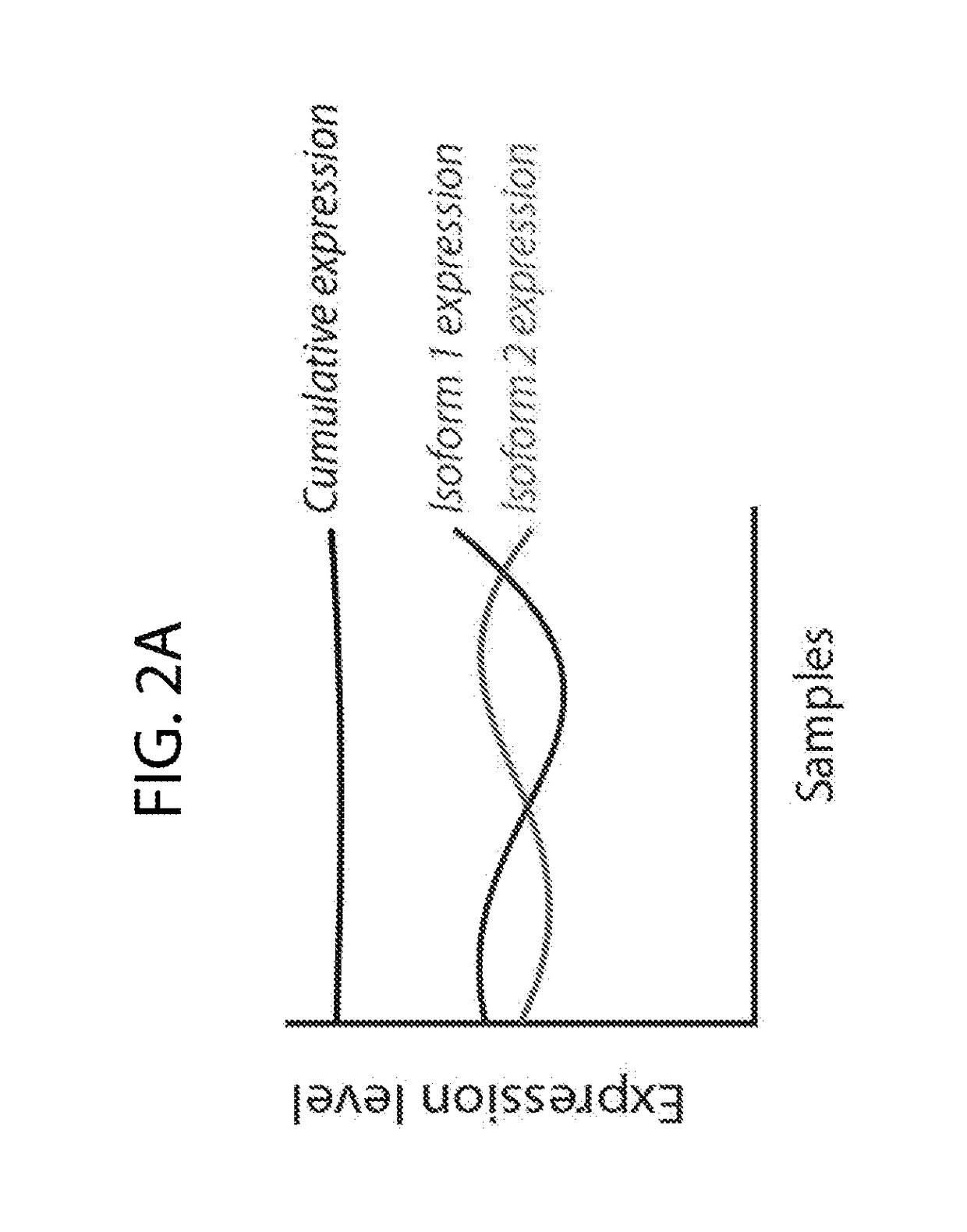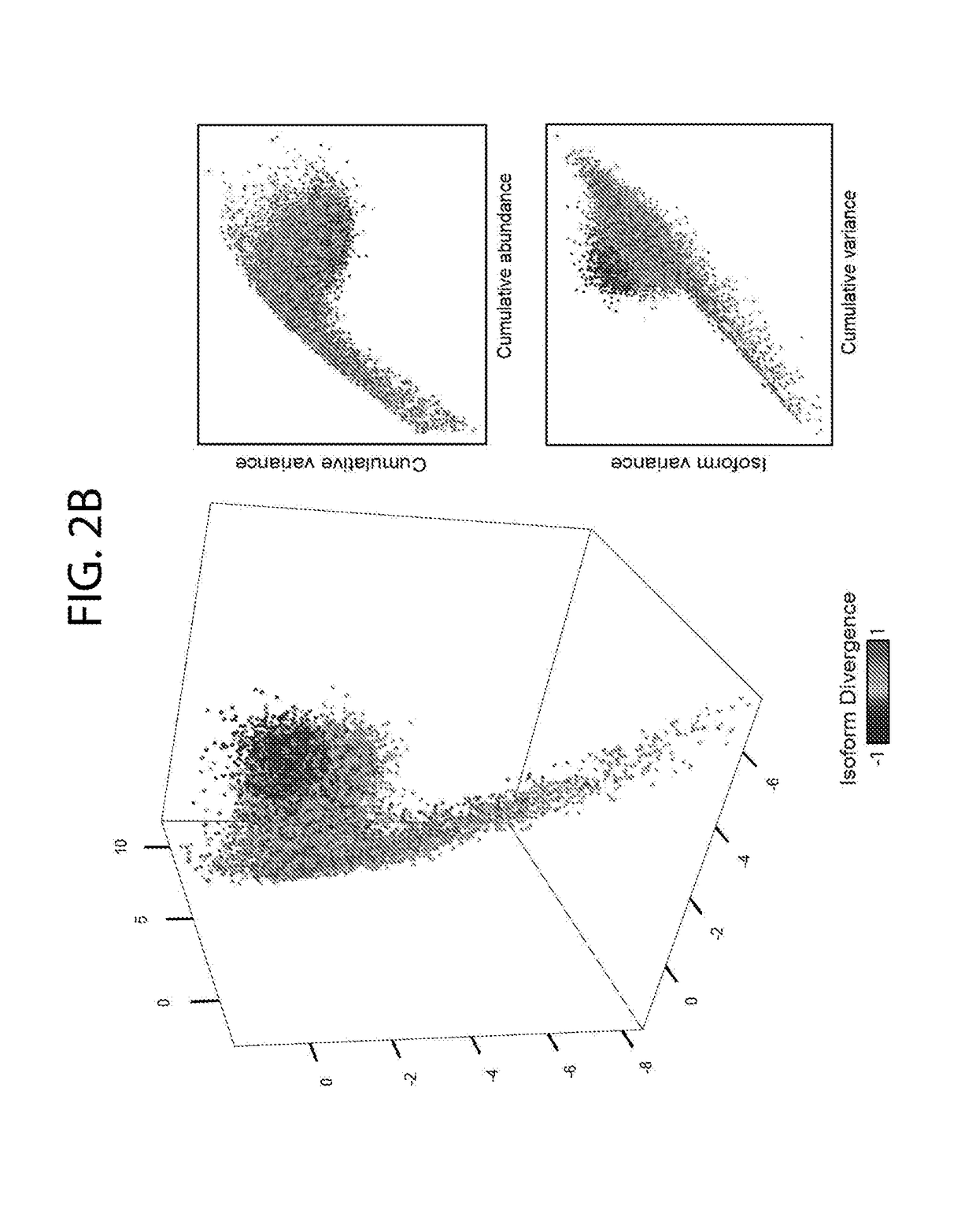Loss of transcriptional fidelity leads to immunotherapy resistance in cancers
a technology of immunotherapy resistance and transcriptional fidelity, applied in the field of cancer, can solve the problems of compromising transcriptional fidelity and producing spurious transcripts, and achieve the effect of losing transcriptional fidelity
- Summary
- Abstract
- Description
- Claims
- Application Information
AI Technical Summary
Benefits of technology
Problems solved by technology
Method used
Image
Examples
example 1
Expression of Truncated mRNA Isoforms in Cancers
[0107]To gain insight into patterns of global transcriptional aberrations, the transcript isoform expression quantitation data from TCGA datasets were used to determine if there are aberrant patterns of alternative transcript expression in cancers, which could potentially indicate widespread transcriptional defects. Four gene-level metrics were defined (FIG. 2A): 1) cumulative expression (CE) as the sum of individual isoform expression levels for a gene in a given sample, 2) cumulative abundance (CA) as a measure of the average gene CE across samples, 3) cumulative variance (CV) as the variance in the CE, 4) isoform variance (IV) as the variance in the expression of an individual mRNA isoform, and 4) isoform divergence (ID) as the most negative correlation (Pearson's r) between the expressions of mRNA isoforms for a given gene. A strong negative ID (e.g. <−0.5) indicates that at least two isoforms of a gene have a mutually exclusive ex...
example 2
Some Cancers Display Widespread Loss of Transcriptional Fidelity
[0110]Through extensive pan-cancer analyses of isoform-specific mRNA expression patterns, a subset of almost every cancer type was found to preferentially express shorter truncated (aberrant or non-canonical) mRNA isoforms (see Example 1, FIG. 3A), indicating defective mRNA transcription or processing in these samples (transcript shortening: TS). To gain deeper insight into the transcriptional aberrations in these tumors, an analysis of differential expression in these tumors at the level of exons was performed. To enable a visual intuitive analysis of differential exon expression events in a matrix heatmap, every gene was binned into 20 exon bins, and a heatmap matrix was constructed, showing relative expression of the exon bins for each of the genes in tumors with TS. Remarkably, the exon t-value heatmap of the 10,448 genes that were expressed (i.e. 90%-ile expression level >30 normalized counts) in clear cell renal c...
example 3
LTF is Observed in Cancer Cell Lines and Involves Defective mRNA Transcription Initiation, Elongation and Processing
[0113]Through a similar analysis of RNA sequencing data from a panel of breast cancer cell lines, it was found that two lines (UACC-812 and MDA-MB-415), displayed a transcript shortening phenotype consistent with LTF in clinical datasets from TCGA (FIG. 6A). The differential exon expression heatmap revealed widespread 5′ shortening in these two lines, again consistent with the TCGA samples (FIG. 7A), and increased global intron retention (FIG. 7B). The overall gene expression profile of these cell lines relative to LTF− cells (i.e. t-values of difference) was also highly similar to that of LTF+ clinical samples (FIG. 7C).
[0114]In order to rule out a possibility that a technical artifact of RNA sequencing in TCGA and Cancer Cell Line Encyclopedia (CCLE) samples could have caused the LTF-like phenotype, independent RNA-seq analyses of these and several other breast cance...
PUM
| Property | Measurement | Unit |
|---|---|---|
| Fraction | aaaaa | aaaaa |
| Fraction | aaaaa | aaaaa |
| Fraction | aaaaa | aaaaa |
Abstract
Description
Claims
Application Information
 Login to View More
Login to View More - R&D
- Intellectual Property
- Life Sciences
- Materials
- Tech Scout
- Unparalleled Data Quality
- Higher Quality Content
- 60% Fewer Hallucinations
Browse by: Latest US Patents, China's latest patents, Technical Efficacy Thesaurus, Application Domain, Technology Topic, Popular Technical Reports.
© 2025 PatSnap. All rights reserved.Legal|Privacy policy|Modern Slavery Act Transparency Statement|Sitemap|About US| Contact US: help@patsnap.com



